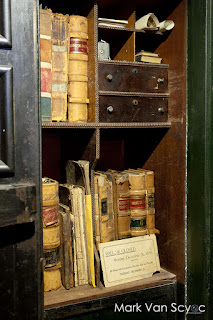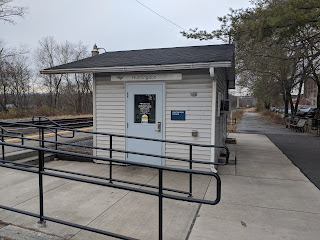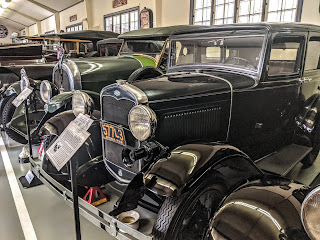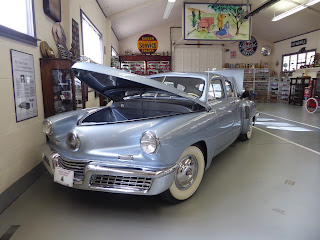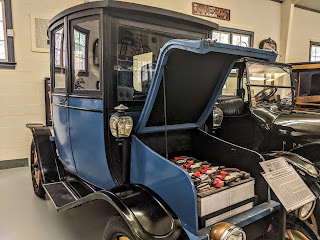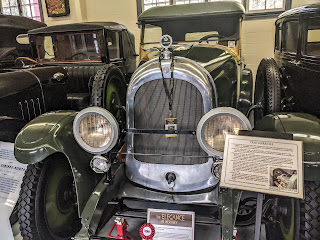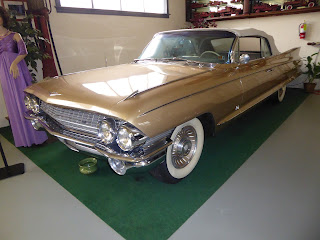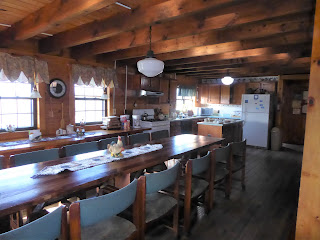View the Site of the Famous Wrightsville Bridge
The summer of 1863 was a pivotal time during the civil war.
The Confederate Army invaded Pennsylvania, captured York, and set its sights on
Harrisburg and Philadelphia. To achieve their goals, the Confederates plotted
to cross the Susquehanna River via the Wrightsville Bridge at Columbia. Upon
learning this, Union forces made the fateful decision to set fire to the
Wrightsville Bridge to keep the Confederate troops at bay. The fire quickly
spread, completely destroying the longest-covered wooden bridge in the world.
Learn about the History of Time at the National Watch and
Clock Museum
The National Watch and Clock Museum, located at 514 Poplar Street, is dedicated to the history, science and art of timekeeping. The museum houses approximately 12,000 items from all over the world, from early non-mechanical devices like water clocks and sundials, to pocket watches, tall clocks, shelf clocks, calendar clocks, novelty clocks and today’s more modern timepieces.
A short lecture and demonstration of the “Engle Monumental
Clock,” is held several times a day at the museum, so be sure to inquire at the
front desk for exact times. Once known as the “Eighth Wonder of the World,” the
clock, crafted by Hazleton resident Stephen Decatur Engle, took 20 years to
construct and was completed by 1878.
The National Watch and Clock Museum, located at 514 Poplar Street, is dedicated to the history, science and art of timekeeping. The museum houses approximately 12,000 items from all over the world, from early non-mechanical devices like water clocks and sundials, to pocket watches, tall clocks, shelf clocks, calendar clocks, novelty clocks and today’s more modern timepieces.
 |
| The entrance to the National Watch and Clock Museum. |
 |
| The beautiful foyer of the Watch and Clock Museum |
 |
| Grand Statuary Clock by E. Farcot, Paris, late 1800s. |
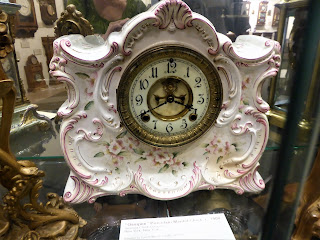 |
| Ossippee Mantel Clock circa 1900. |
 |
| Railway time was created for a standardized system of timekeeping to avoid the confusion that resulted from having non-uniform local times in each town. |
 |
| The foxes eyes move in this picture clock, circa 1890, Germany. |
 |
| Old advertising clocks. |
The mechanical marvel was displayed on tour throughout the
Eastern United States for a total of 70 years and crowds paid between 15 and 25
cents per person to see it in action.
The National Watch and Clock Museum is open Wednesday through Saturday from 10 a.m. to 4 p.m. from January to March and Tuesday through Saturday from 10 a.m. to 5 p.m. from April to December.
Visit a 124-year-old Business
The beloved institution known as Hinkle’s has been serving Columbia residents for years. The family owned and operated business not only dispenses prescriptions, but also carries a range of items from toiletries, to gifts, cards and holiday decorations.
The restaurant, often referred to as a “landmark among
locals” is a throwback to the days of yore and elicits a tinge of nostalgia
among those of a certain age. Mike
Clark, a writer and Columbia native, said the business has grown over the
years. “When I was a kid in the ‘50s, Hinkle’s was a small pharmacy, with
magazines and a soda fountain where you could order ice cream and cherry coke,
which was my favorite.” Clark said it has since grown into the ‘town hub.’
“People from all generations get together there and talk. It’s like ‘Cheers,’
where everybody knows your name.”
The beloved institution known as Hinkle’s has been serving Columbia residents for years. The family owned and operated business not only dispenses prescriptions, but also carries a range of items from toiletries, to gifts, cards and holiday decorations.
 |
| Hinkle's has been renovated since I took this picture, much to the dismay of some. |
The eatery, with its old-school lunch counter, reasonable
prices and cozy booths in shades of teal, possesses that home-town feel of days
gone by. Waitresses traverse a path between tables to serve customers
breakfast, lunch and dinner. The array of items include homemade soups,
sandwiches, omelets, steaks, and the popular “Shifter” sandwich. Once a
favorite of the railroad workers who ran the switch engines, the “shifter” is
comprised of ham and cheese, lettuce, tomato, sweet pickle and mayo.
Columbia is known for its plentiful antique shops, many of
which beckon visitors with “open” flags. A 20,000 square foot building located
at 304 Walnut Street is particularly impressive. Named “Burning Bridge
Antiques,” the business was once home to a carriage shop, a sewing factory and
a hardware store. When Willis Herr and his sons heard rumors that the building
was going to be razed to make room for a parking lot, they set about to save
the historic structure. They succeeded, not only in saving the building, but also
restoring it to its original condition. With its original pressed tin ceiling,
wood flooring and American chestnut mill work, it’s a beauty to behold and is
home to more than 250 vendors.
The First National Bank Museum of Columbia tells a story
about the 371st bank to be chartered in the United States. Brothers Solomon and
Samuel Detweiler, who opened for business in 1864 with $100,000 capital, ran the
bank from the first floor of their home located at 170 Locust Street.
When the owners died, the property was passed down to other
family members who eventually willed it to the Columbia Free Public Library,
who subsequently put it on the market four years later.
Nora Motter Stark’s parents purchased the 6,500 square-foot property and the rest
is history. “When my father purchased it in the 1950’s, my mom thought he was
crazy because it was considered to be a bit of a white elephant, which had been
neglected for a few years. She was a little apprehensive, but my dad saw past
all of that,” said Stark.
Today, she and her husband live in her childhood home and
maintain a museum where the bank once operated.
Visitors can view the custom-crafted teller cages made of black walnut
and the president’s desk crafted of the same material.
A room adjacent to the banking area is open to the public and
guests can just imagine the Board of Directors conducting business around the
large table which sits in front of an impressive fireplace festooned with tiles
Stark believes may have been crafted by Henry Chapman Mercer.
Tours are available by appointment and arrangements can be
made by visiting the website at www.bankmuseum.org. Many thanks to Mark Van Scyoc for the beautiful photos.
Tour an Old Glass Factory
The Susquehanna Glass Factory dates back to 1910 when Albert
Roye installed a glass-cutting machine in a shed behind his yard and opened for
business. Two years later, his brother joined him and today the company is
still going strong, operating at 731 Avenue H, not far from that original shed.
The family owned-and-operated business specializes in
customizing glassware, sand etching, color screening, laser etching and rotary
engraving and offers factory tours on request.
Step into History at Wright's Ferry Mansion
 |
| Autumn at the Wright's Ferry Mansion. |
Those visiting the area from May through October, can tour
one of the first homes erected in the area. Situated near the Susquehanna River
at 38 S. Second Street, This historic property tells the story of
Susanna Wright, a native of Lancashire England who immigrated to Pennsylvania in
1714 and in 1728 settled in Columbia. Her two-and-a-half story limestone dwelling is known as the
only Pennsylvania English Quaker House furnished exclusively to the first half
of the 18th century.
Susanna was the daughter of John Wright, who established an
animal-powered ferry as one of the first means of crossing the Susquehanna
River. She was versed in Latin and Italian and fluent in French. The highly
respected businesswoman was also a noted poetess and scholar and friend of
early Pennsylvania luminaries like Ben Franklin.
 |
| Wright's Ferry Mansion (front view) |
Curator Elizabeth Meg Schaefer, who authored the 304-page
book titled, Wright’s Ferry Mansion, The House, said, “Wright was one of
the first people in Pennsylvania to raise silkworms and, with her brother, grew
flax for linen, hemp for rope and coarse cloth, hops for beer and ale and had a
notable orchard. She was exceptional in her versatile intellect and the breadth
of her knowledge and interests.”
 |
| The front of Elizabeth Meg Shafer's book titled, "Wright's Ferry Mansion," The House. |
Visitors will pass through the Dutch door and step into the
brick entryway where they can view the formal parlor, explore the clock room
used for studying, entertaining and conducting business and marvel at the
kitchen with its expansive hearth and squirrel-tale oven. Upstairs, guests will get a peek into the rooms where Wright
and her brother slept and where she likely raised her silkworms.
Shaefer, with her encyclopedic knowledge of Wright and the
mansion, invites guests’ questions and leaves patrons with a real sense of what
it was like to have lived as a prominent proponent of colonial self-sufficiency
in 18th-century Pennsylvania.
On a separate note, I had the opportunity to visit West Chester a year or so ago to view the works of historical artist Adrian Martinez. Among his collection is an outstanding work depicting Susanna Wright.
The Wright's Ferry Mansion is open Tuesday through Saturday from 10 a.m. to 3 p.m. from May through October.
These are just a few suggestions to make the most of a visit to Columbia, Pennsylvania where many historic gems await.
On a separate note, I had the opportunity to visit West Chester a year or so ago to view the works of historical artist Adrian Martinez. Among his collection is an outstanding work depicting Susanna Wright.
 |
| Historical artist Adrian Martinez. |
 |
| Artist Adrian Martinez depicts Susanna Wright in this painting. |
These are just a few suggestions to make the most of a visit to Columbia, Pennsylvania where many historic gems await.












